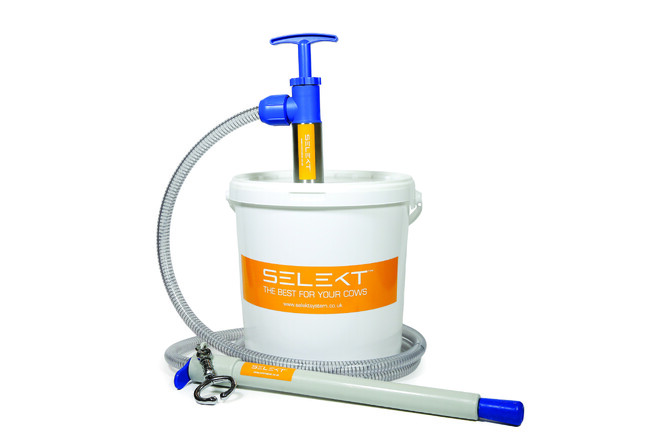Using these tools nice and early will get cows up and feeling better faster, which will save you not just time but also money in expensive drugs.
Picture this:
- Your favourite 8 year old dairy cow has been having a bit of trouble calving. You’ve had to jump in and help, and have just managed to pull out a huge but thankfully alive heifer calf. The cow looks much happier with the calf out but seems quite weak and shaky
- Your worker goes off to get the colostrum herd in one morning after a stressful milking with lots of temperamental heifers. He comes back to say that there are two cows down and they won’t get up
- It is afternoon milking and you notice a cow who is normally first in the shed hanging back. On closer inspection she looks terrible - head down, eyes sunken and there is a horrible smell coming from her back end
I’m sure many or all of you will have experienced one or maybe even all of these situations before. Calving is a busy, stressful time and it is much better to be avoiding all of these situations if possible. They all have one thing in common as an underlying factor contributing to the cow’s problem - dehydration. It is easy to overlook dehydration, particularly when you are busy, but not correcting it in time may be a significant reason why such cows get worse or even die. Over 59% of sick cows are concurrently dehydrated and this has many knock-on effects, largely due to the fact that dehydrated cattle lose their appetite. These include a higher risk of metritis, subclinical ketosis, twisted stomachs (LDAs) and a decreased milk yield.
So, what can we do about it?
Fluid therapy is the answer. It has been said that the invention of fluid therapy has been one of the most significant breakthroughs in modern medicine, be that animals or humans, due to its ability to save lives quickly and easily. It is likely that at one point or another you will have seen your vet pull out their trusty fluid pump after calving a cow or when seeing a sick one. Oral fluid therapy is by far the easiest way to give fluids to cattle; due to their size it would take a lot of fluids into the vein to make a difference which would take many hours (which are not spare in the spring for sure!) and their rumens are large enough to cope with a large volume of fluid all in one go. Did you know that fluid pumps aren’t just for vets to use? You can buy a Selekt pump for your own farm, so you can treat cows that need fluids faster.
Selekt fluid pumps are easy to use. They have a large plastic tube which sits in the mouth and is clipped to the nose, then a longer more flexible tube which is carefully advanced to the back of the throat, down the oesophagus and into the rumen. You then put the pump in a 20L bucket of warm water and pump away - it takes as little as 2 minutes to deliver the total volume (or, if you’re feeling competitive, less than 18 seconds for 10L as we found out at a conference challenge last year. This is not recommended to try when the tube is actually inside a cow!).
In addition, Selekt makes a range of sachets that can be added to the fluids to help the cow even more. There are four main ones - Fresh Cow, Off Feed, Restore and Antacid.
How do I know which sachet to use?
- Fresh Cow: contains calcium, magnesium, energy and some yeasts. This is best for freshly calved cows, such as our first scenario. This will provide them with a boost of key macrominerals and the yeasts help kick-start the rumen to get the cow eating as quickly as possible
- Off Feed: contains more calcium, magnesium, some potassium, yeasts, energy and an appetite stimulant. This is best for sick down cows, such as our second scenario (milk fever, endotoxaemia etc). It will provide the cow with 108g of calcium and 7.5MJME.
- Restore: this is like powerade for cows. It is good for more mild cases of dehydration, or cases outside of spring where metabolic disease is less likely to be a major contributing factor
- Antacid: used for cows with rumenal acidosis (e.g. following acute fodder beet outbreak)
Top tip and tricks when using fluid pumps and Selekt sachets:
- Use plenty of water - cows will need at least 20L, but often 40L if they are very dehydrated
- Make sure the water is warm, but not boiling hot!
- When opening the sachets, keep your face out of the way especially on a windy day - or else you inhale a puff of the powder (and sadly it doesn’t taste that great to humans!)
- Mix the sachets in well before you start pumping
- Make sure the pump is in the right place - you should be able to see the tip of the pump advancing down the left side of the neck. Get someone to watch for you if you can. Double check the placement with your hand - you should be able to feel two solid tubes separately - the trachea and the fluid pump. Apply the nose grip and lock the tube in place
- Start pumping steadily - but not too violently or you’ll snap the handle
- Tip the bucket when you’re nearing the end so you get all the dregs
- Pull the tube out as soon as you’re finished
If you are not sure about using a fluid pump but keen to have one ask your vet next time they are on farm to demonstrate the correct way to use it, and have a practice. The more you do it, the more confident you’ll become. Using these tools nice and early will get cows up and feeling better faster, which will save you not just time but also money in expensive drugs. Invest in a Selekt fluid pump and some sachets today!
- Christine Utting


